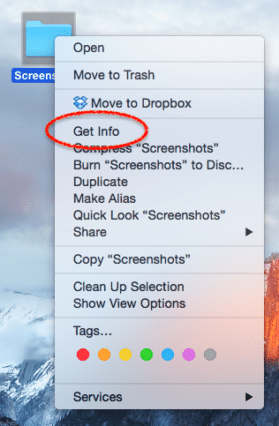

- #CHANGE SCREENSHOT PATH MAC HOW TO#
- #CHANGE SCREENSHOT PATH MAC FOR MAC OS#
- #CHANGE SCREENSHOT PATH MAC ARCHIVE#
- #CHANGE SCREENSHOT PATH MAC MAC#
Alternatively, you can right-click on the floating thumbnail to store the screenshot in Documents or Clipboard. How do I save a screenshot directly to a folder on a Mac? When you type keyboard shortcuts such as Command + Shift + 3, all screenshots end up on your desktop.
#CHANGE SCREENSHOT PATH MAC MAC#
Other Alternatives to Change Screenshot Location on Mac Commands On the contrary, it won’t do the trick and the screenshots will creep back on your desktop.
#CHANGE SCREENSHOT PATH MAC HOW TO#
These are exactly what you need to know about how to change screenshot location on Mac.īear in mind before you type the commands you need to manually set up a new folder known as Screenshots via Documents or other destination. Now type " killall SystemUIServer" and press Enter. To revert to the default screenshot destination, navigate to Terminal and fill in- defaults write location ~/Desktop and press Enter.


Click on Finder to launch a new window,.You can change your macOS High Sierra’s screenshot default location by following the file path below. Popular locations include Desktop, Documents, Clipboard, Preview, Messages, or Mail. Your screenshot location is changed and that’s where your images will go until you reset it again.If you set up Other Location, you can go to the folder you want the screenshot to go to, or generate a fresh one.Next, either select a listed folder, or pick out Other Location.If you’re running Mojave, it’s super-easy to change screenshot location on Mac. Tip: How to Convert PNG to JPG on Mac Mojave
#CHANGE SCREENSHOT PATH MAC ARCHIVE#
To archive a screenshot as a JPG, invoke the Terminal to overrule the default format set up. Note: By default, macs store screenshots as PNG files they’re slightly larger than JPG versions.
#CHANGE SCREENSHOT PATH MAC FOR MAC OS#
For mac OS High Sierra or previous, you have to invoke Terminal, an app for feeding command paths to control your Mac. The simplest way is via the Screenshot app in Mojave. How to Reset the Default Location of Mac ScreenshotsĬan I change my screenshot setting? There are two methods to set up another destination for your screenshots to avoid the default location. This way, you prevent screenshots from being loaded on iCloud Drive once you disable Documents or Desktop syncing in macOS High Sierra. You can change screenshot location on Mac to prevent them from messing your desktop. Pre-Mojave versions don’t have a direct way to command macOS to store screenshots elsewhere. Grab stores screenshots in the Documents folder and if you don’t edit the name of the file, it’s saved as Untitled. Grab allows you to take screenshots but they have a tendency to relocate even after you save where you want. It’s accessible via the Utilities folder> Applications folder. Where do those screenshots store? Mac OS Mojave comes with a screenshotting app known as Grab. Macs save screenshots on the desktop by default and encode a name like ‘Screenshot at 13.20.55’, showing the date and time of the file. Other Alternatives to Change Screenshot Location on Mac Part 4. How to Reset the Default Location of Mac Screenshots Part 3. Where Can I Find Screenshots on Mac? Part 2. Whether you have macOS High Sierra or Mac OS Mojave, we’ve got clever ways to get the job done.Ĭontents: Part 1. In this piece, we’ll walk you through how to change screenshot location Mac. Once you reconfigure the destination for your screenshots, you’ll have more flexibility to customize and revolutionize your collections. However, you can adjust the destination if these files clutter your desktop. For starters, the screenshot goes to your desktop by default just like the pasteboard in Windows. Capturing a screenshot on your computer sounds simple but the fundamentals of the process are unknown to many users.


 0 kommentar(er)
0 kommentar(er)
